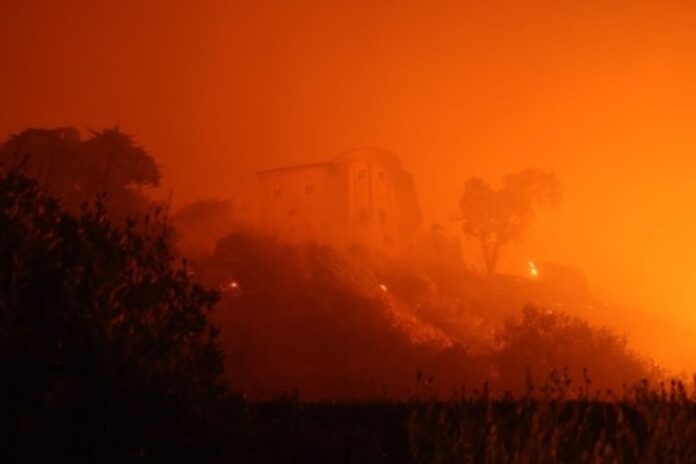The Los Angeles wildfire damage is estimated to range between $52 billion and $57 billion, making it one of the most expensive natural disasters in United States history. Consuming some of California’s wealthiest neighborhoods like Santa Monica and Malibu, this disaster has wreaked havoc on homes, businesses, and the lives of thousands of residents.
Unprecedented Economic and Property Damage
According to AccuWeather Inc., the wildfire has already destroyed more than 1,000 structures in neighborhoods with median home values exceeding $2 million. The damages include not just property losses but also widespread economic disruption.
“These fires are already one of the worst wildfires in California history,” said Jonathan Porter, chief meteorologist at AccuWeather. “Should a large number of additional structures be burned in the coming days, it may become the worst wildfire in modern California history based on the number of structures burned and economic loss.”
Hurricane-force winds continue to drive the flames deeper into affluent communities, raising concerns about further destruction. With the potential to surpass previous wildfire records, this disaster highlights the growing risks of climate-induced catastrophes.
Comparing With Past Natural Disasters
The Los Angeles wildfire damage, projected at up to $57 billion, places it among the costliest disasters in US history. Hurricane Katrina in 2005 remains the most expensive, with costs exceeding $200 billion. California’s 2018 wildfires, including the infamous Camp Fire, caused around $30 billion in damages, showcasing the escalating financial toll of such events.
The significant disparity between these figures reflects not only the rising costs of recovery but also the increasing vulnerability of high-value properties in wildfire-prone regions.
Health and Environmental Impacts
In addition to the financial toll, the Los Angeles wildfire is expected to have severe long-term health and environmental consequences. Toxic smoke from the blazes poses a major risk to residents, potentially leading to respiratory issues and other health problems.
The environmental damage is equally concerning. Thousands of acres of vegetation and wildlife habitats have been destroyed, exacerbating the region’s ecological imbalance. The fires also contribute to worsening air quality, impacting surrounding areas far beyond the immediate burn zones.
The Role of Santa Ana Winds
The wildfire’s rapid spread has been largely attributed to powerful Santa Ana winds, which gusted at speeds exceeding 70 mph. These winds made it extremely difficult for firefighters to contain the flames and, at times, rendered aerial firefighting operations unsafe.
The winds have historically fueled some of California’s most destructive fires. Their persistence underscores the challenges emergency responders face in mitigating the impact of such natural disasters.
Tourism and Regional Economy at Risk
Southern California’s tourism industry, a vital economic driver, is likely to suffer significantly from the wildfire. Popular tourist destinations, luxury homes, and scenic spots in the affected areas face extensive damage.
The economic ripple effects will likely extend to insurance claims, rebuilding costs, and reduced property values in fire-prone regions. Recovery efforts could take years, with lasting impacts on both local communities and the state’s economy.
Key Takeaways About Los Angeles Wildfire Damage
- Fatalities and Losses: At least five lives lost, with over 1,000 structures destroyed.
- Financial Impact: Estimated damage ranges between $52 billion and $57 billion.
- Affected Areas: Wealthy neighborhoods like Malibu and Santa Monica bear the brunt.
- Contributing Factors: Santa Ana winds and dry conditions intensified the fires.
As California faces this unprecedented disaster, the focus on preventive measures and climate resilience becomes more urgent than ever. The Los Angeles wildfire serves as a stark reminder of the growing challenges posed by climate change and the need for proactive disaster management strategies.
This tragic event has left an indelible mark on the region and raised critical questions about preparedness, policy, and the resilience of communities in the face of escalating natural disasters.

